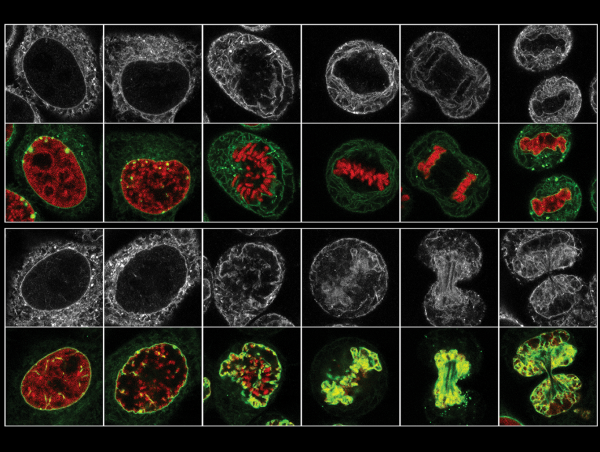Nuclear envelope function and remodeling
The nuclear envelope (NE) is built by an asymmetric membrane sheet of the endoplasmic reticulum that serves as a protective boundary of the genome and a versatile communication interface. For nucleo-cytoplasmic communication, the NE is studded with thousands of nuclear pore complexes that define the barrier and permeability properties of the NE, and allow for selective exchange of macromolecules across the nuclear boundary. The NE is further functionalized by a very unique set of membrane proteins that perform key functions in nuclear organization, control of gene expression, signaling, lipid metabolism, cytoskeletal interactions and mechanobiology. A number of severe genetic disorders termed ‘nuclear envelopathies’ are caused by mutations in genes encoding for NE proteins, including muscular dystrophies, dystonia and premature aging, highlighting the physiological importance of the NE.
Despite the seemingly static role of the NE as a compartment boundary, it is highly flexible and dynamically remodeled at different scales. During cellular growth and differentiation, the NE incorporates new components and changes its composition, thereby aiding cells to fulfill their tissue-specific functions. In response to malfunction and stress, defective components must be detected and eliminated. Further, NE plasticity is required to meet mechanical challenges, and the NE can adapt its organization in response to force or rupture. Finally, rapid changes in NE architecture accompany the process of cell division. In human cells, NE breakdown (NEBD) represents one of the most drastic and rapid changes in the organization of intracellular architecture and is a prerequisite for the proper segregation of chromosomes during open mitosis. How these dynamic changes are executed is a major focus of current research in the lab.
Exploiting cell biological, biochemical, proteomic and high-end imaging approaches as well as insightful in vitro assays that we have developed, we
- study the function of NE components in cell growth and differentiation
- investigate the biogenesis of NE components
- decipher the mechanisms of NE breakdown, giving focus to the disassembly of NPCs and the dissolution of NE–chromatin contacts
- define the importance of NE remodeling for the fidelity of mitosis and cell division
- investigate NE remodeling during senescence


